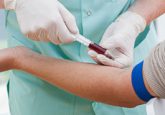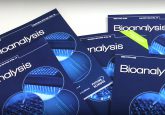3-(4-Hydroxyphenyl)propionic acid: the forgotten detection substrate for ligand-binding assay-based bioanalysis

Abstract Ligand-binding assays are ideal for routine bioanalysis, but we reason that the straightforward replacement of the conventional chromogenic horseradish peroxidase substrate, 2,2′-azino-bis(3-ethylbenzothiazoline-6-sulfonic acid, of a routinely used preclinical immunoassay to detect hIgG, with the fluorogenic 3-(4-hydroxyphenyl)propionic acid would broaden the narrow dynamic range. The replacement leads to a sensitivity of 0.47 (minimum required dilution [MRD] 10) and 1.02 (MRD 50) ng/ml, and dynamic ranges of 3.3 (MRD 10) and 3.6 (MRD 50) orders of magnitude, and thereby had improved sensitivity and dynamic range compared with other conventional colorimetric ELISAs, other ligand-binding assay technologies or LC–MS assays. Improvements in sensitivity...






